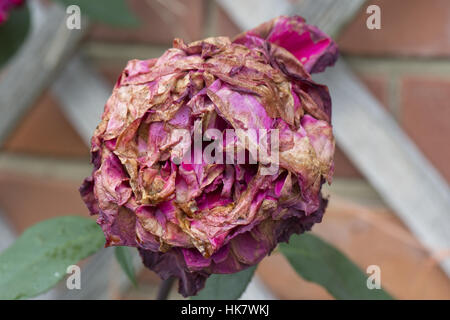

Observation is key and keeping your eyes peeled can help you spot signs that something might be wrong, for example rose leaves turning yellow. While being so popular they are also seen by many as difficult flowers to maintain, and the volume of pests and diseases that can hit roses can make growing them complicated. Roses are so highly-regarded by gardeners, who are often searching for the best fragrant roses or the best climbing roses for their backyard. By spacing roses out, keeping them healthy and well pruned, and protecting roses from winds, that can go some way to helping prevent rose rosette disease. Once it is confirmed that a plant has the virus, the best thing to do is to remove the rose and destroy it.Īs there is no cure for the virus, the best way to combat it is to look for resistant varieties and ensure good maintenance of existing roses. Unfortunately there is nothing that can be done if a plant is infected. The main tell-tale sign is clusters of shoots that all emerge from one point on the plant. There are many signs of rose rosette disease, including bright red growth that retains its color rather than turning green and branches with excessive thorns. The host plant is often an invasive Rosa multiflora and then the mites carry the virus to other roses. The disease is transferred from rose to rose by a tiny mite transported by the wind, people, animals, or tools. Rose rosette disease is a virus that causes strange deformations in the plants stems, leaves, and flowers. One example is the Garden Safe Fungicide 3 Concentrater available at Walmart. You can get rust-resistant varieties of roses, and there are common fungicides that can be used against rust. Avoid overwatering and provide good drainage.’ He says: ‘Water the soil around the roses, rather than the foliage, to prevent fungal diseases. Zahid Adnan, a horticulturalist and founder of The Plant Bible, advises that this kind of ‘water management’ can be a vital way of combating many common rose diseases, including rust, mildew, and black spot. Avoid getting the leaves wet and remove any fallen leaves. Monitor plants regularly, so you can pick off and destroy infected leaves at the early stage of infection. The spots can go from orange to brown and then to black, eventually causing leaves to turn yellow and then drop. Rose rust is yet another fungus disease that hits rose bushes and it causes orange-colored spots on the leaves, often starting on the underside before spreading to both sides. Alternatively, you can get organic sprays, including Bonide Rose Rx Multi-Purpose Fungicide, Insecticide and Miticide on Amazon. There are fungicides available to use against black spot, such as the BioAdvanced Disease Control for roses, plants and shrubs on Amazon.

You can get cultivars of roses that are resistant to black spot, however it is an ever-mutating fungus so no long-term resistance can be absolutely guaranteed. ‘We pruned the infected areas, adjusted the watering schedule, and within a month, the roses started to thrive again.’ He adds: ‘A great example of this is a case we handled in which a client's rose garden had developed black spot due to overwatering and lack of sunlight.

Any infected leaves need to be destroyed and not put on the compost pile Gene Caballero, an expert with 20 years of landscaping experience and co-founder of GreenPal, recommends that pruning is a great way to prevent rose diseases from spreading.
#Rose botrytis blight edu how to#
The fungal spurs can also be taken from plant-to-plant on tools, so knowing how to clean garden tools such as pruning shears after any rose pruning is vital. Rose black spot is commonly seen in spring and fall, when conditions are wetter, and common garden watering mistakes like overhead watering and splashing the foliage can spread the fungus from leaf-to-leaf. The disease can lead to the rose defoliating and it weakens the plants, making them more susceptible to other rose pests and diseases. These black spots on rose leaves will be surrounded by a yellow area.

The disease will show as circular black spots, which start small and grow to around half-an-inch in diameter. Rose black spot is a very common rose disease, it is a fungal disease caused by fungus Diplocarpon rosae. (Image credit: Tim Gainey / Alamy Stock Photo) 1.


 0 kommentar(er)
0 kommentar(er)
